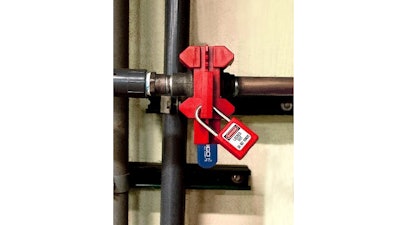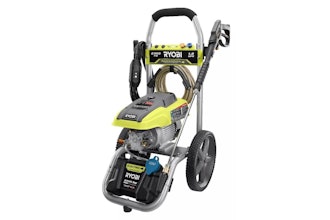
Lockout/tagout (LOTO) practices have been a key target for safety organizations for decades. Without clear LOTO procedures in place, employees who service machines supported by energy sources can put themselves at tremendous risk.
LOTO, at its most basic, is the idea that a worker can disconnect a piece of equipment from its power source during servicing and remain protected from accidental start-up. Using security devices, other workers are “locked out” from equipment access, and the only person who can re-energize the machine is the one with keyed access – e.g., that individual performing the service. This way, the machine cannot be re-energized before the person performing maintenance has completed their tasks and are out of harm’s way.
But unfortunately, incomplete or improper LOTO is still a significant cause for concern in many trades. According to the latest ASSE (American Society of Safety Engineers) Tech Brief on the issue, hazardous energy related to these incidents continues to be “a significant generator of fatalities, injuries, and citations.” OSHA describes these injuries as including electrocution, burns, crushing, cutting, lacerating, amputating, or fracturing body parts, and says that workers injured on the job from exposure to hazardous energy lose an average of 24 workdays for recuperation.
According to Todd Grover, Global Senior Manager, Applied Safety Solutions for The Master Lock Company, there are numerous reasons that dangerous incidents still occur. Besides a lack of training that results in misunderstanding over how to fully lock out, sometimes workers feel that time simply does not allow for the procedures, so “they selectively bypass it.” The other major cause, says Grover, is a feeling that lockout is not necessary given past work history. “The task has been done before successfully, and the assumption is it’s going to go the same way this time. And that’s when a circumstance changes and the accident occurs.”
A Revised Standard
Organizations like ANSI (American National Standards Institute) have had LOTO in their crosshairs for decades: the first standard was published in 1982 and it was revised or revalidated five times between then and 2014. Still, guidelines continue to evolve, and an updated standard -- “ANSI/ASSE Z244.1 2016 Lockout, Tagout and Alternative Methods” – was formally unveiled last week.
The changes are “extensive and significant,” according to ASSE, the organization serving as secretariat of the Z244 ANSI Accredited Standards Committee (ASC). Grover is a member of the aforementioned committee and has been at the forefront of this highly revised standard – a process that’s been two years in the making.
According to Grover, some of the most significant revisions are in Section 5 and target both the end users’ and the machine builders’ requirements. For the OEMs, ANSI says machines should be built to be readily lockable. “That includes the isolation points being on the machine, and good accessibility and marking, so they’re easily found,” says Grover. “They should be not overly complex.”
Section 5 also asks that the machine builder provide a lockout procedure as guidance to the end user, because “who better than the builder would know the best way to lock out that machine?”
Historically, LOTO standards were very behavior-oriented and, says Grover, OSHA’s directive still fits that characterization. In fact, the long-standing OSHA approach takes a zero-tolerance stance on energy and he says operators are finding it increasingly difficult to comply because modern machines don’t always allow for a completely zero-energy condition to be obtained. Therefore, one of the major revisions to ANSI’s Section 5 acknowledges this issue and asks for a recognition of tasks that need to be performed to keep this machinery doing its job, and which of those tasks should be done under lockout.
“And if there are tasks that must be done with power present, identify those and do a risk assessment on what control measures will adequately protect workers when power sources are allowed to remain active in order to do their work,” he explains. “That combination of machine design for user friendly lockability, precision of lockout procedures, and a task list that helps end users understand how to use the protective features of the machine are steps that really were not addressed in the ANSI standard prior, and really were not touched upon in the OSHA standard.”
And though it places some additional requirements on the machine builders, ANSI formulated this with the prediction that machines designed for compliance with the latest iteration would be more appealing to buyers.
According to Grover, “We think it is going to contribute to the sell-ability of machinery, both in terms of end user demand, and for differentiating machine builders above their competition [by providing] the background that end users will value.”
For more information, visit https://store.assp.org/PersonifyEbusiness/Store/Product-Details/productId/29237342.























